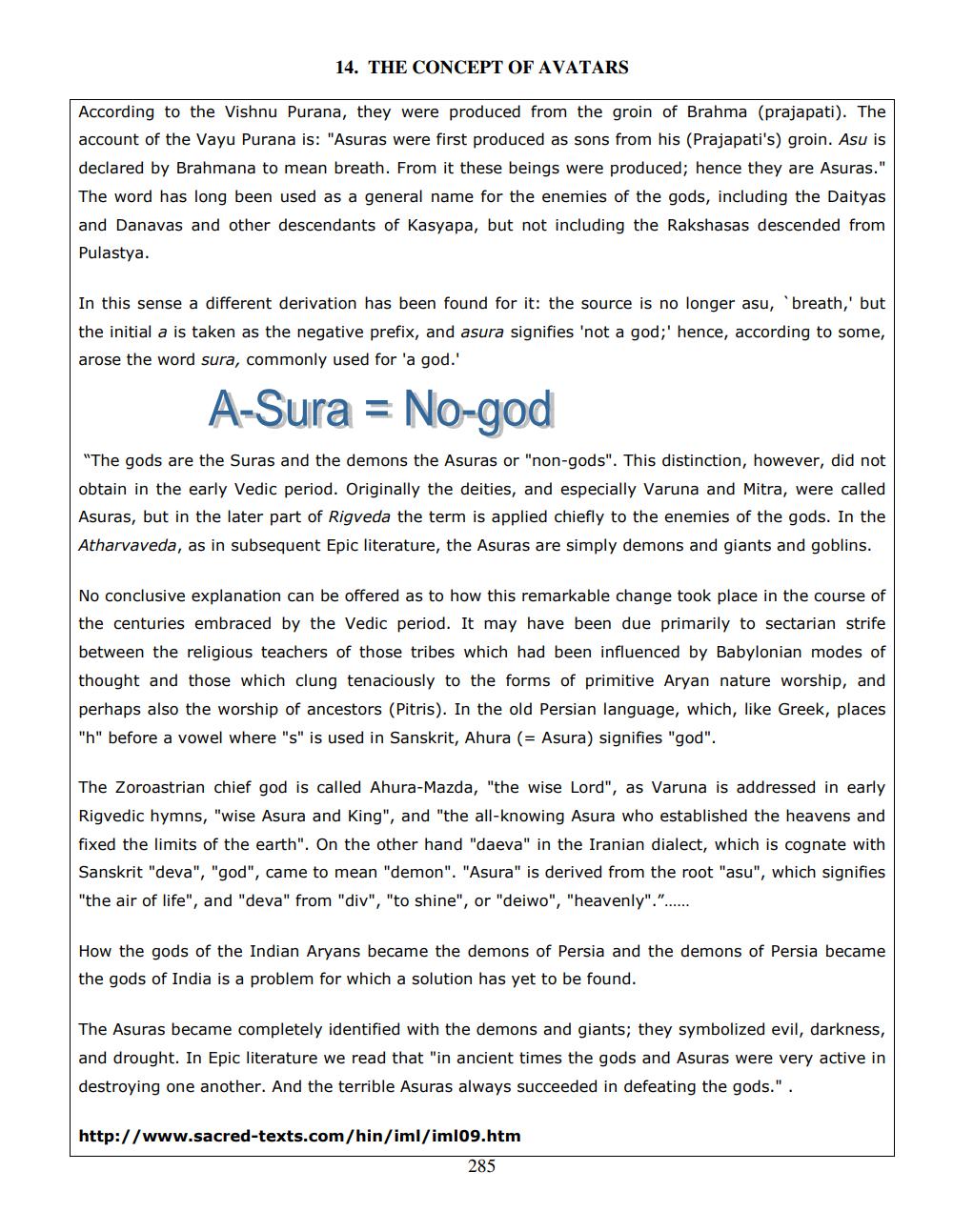________________
14. THE CONCEPT OF AVATARS
According to the Vishnu Purana, they were produced from the groin of Brahma (prajapati). The account of the Vayu Purana is: "Asuras were first produced as sons from his (Prajapati's) groin. Asu is declared by Brahmana to mean breath. From it these beings were produced; hence they are Asuras." The word has long been used as a general name for the enemies of the gods, including the Daityas and Danavas and other descendants of Kasyapa, but not including the Rakshasas descended from Pulastya.
In this sense a different derivation has been found for it: the source is no longer asu, 'breath,' but the initial a is taken as the negative prefix, and asura signifies 'not a god;' hence, according to some, arose the word sura, commonly used for 'a god.'
A-Sura = No-god
"The gods are the Suras and the demons the Asuras or "non-gods". This distinction, however, did not obtain in the early Vedic period. Originally the deities, and especially Varuna and Mitra, were called Asuras, but in the later part of Rigveda the term is applied chiefly to the enemies of the gods. In the Atharvaveda, as in subsequent Epic literature, the Asuras are simply demons and giants and goblins.
No conclusive explanation can be offered as to how this remarkable change took place in the course of the centuries embraced by the Vedic period. It may have been due primarily to sectarian strife between the religious teachers of those tribes which had been influenced by Babylonian modes of thought and those which clung tenaciously to the forms of primitive Aryan nature worship, and perhaps also the worship of ancestors (Pitris). In the old Persian language, which, like Greek, places "h" before a vowel where "s" is used in Sanskrit, Ahura (= Asura) signifies "god".
The Zoroastrian chief god is called Ahura-Mazda, "the wise Lord", as Varuna is addressed in early Rigvedic hymns, "wise Asura and King", and "the all-knowing Asura who established the heavens and fixed the limits of the earth". On the other hand "daeva" in the Iranian dialect, which is cognate with Sanskrit "deva", "god", came to mean "demon". "Asura" is derived from the root "asu", which signifies "the air of life", and "deva" from "div", "to shine", or "deiwo", "heavenly"."...
How the gods of the Indian Aryans became the demons of Persia and the demons of Persia became the gods of India is a problem for which a solution has yet to be found.
The Asuras became completely identified with the demons and giants; they symbolized evil, darkness, and drought. In Epic literature we read that "in ancient times the gods and Asuras were very active in destroying one another. And the terrible Asuras always succeeded in defeating the gods.".
http://www.sacred-texts.com/hin/iml/im109.htm
285




